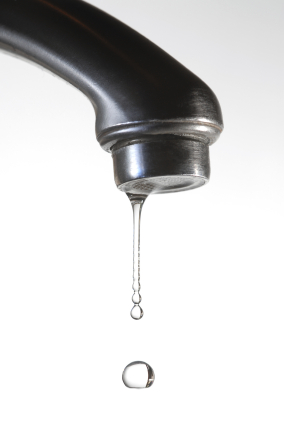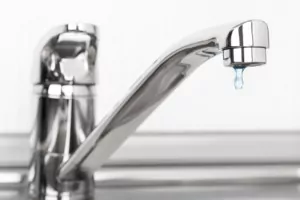The publisher is making a number of good points related to The Environmental Impact of Leaky Faucets overall in this great article on the next paragraphs.

Intro
A leaking tap could feel like a minor inconvenience, however its repercussions expand much past the periodic drip. Recognizing the results of a dripping tap is essential for both house owners and the setting. In this write-up, we'll discover the numerous influences of this usual household issue and why addressing it promptly is important.
Reasons For Leaky Faucets
Leaking faucets can result from a variety of elements, including wear and tear, high water pressure, and corrosion. Over time, the constant use taps can cause damaged seals and gaskets, triggering leaks to develop. In addition, too much water stress can put strain on plumbing fixtures, bring about leakages. Rust and rust can also damage tap elements, making them susceptible to leakage.
Water Wastefulness
Among the most substantial repercussions of a leaking faucet is water wastefulness. Even a small drip can amount to gallons of drainage in time. This not only increases water expenses but additionally adds to water scarcity and ecological degradation. Addressing dripping taps immediately is essential for conserving this priceless resource and reducing its impact on the world.
Financial Influence
In addition to wasting water, dripping taps can also have a significant economic influence. Enhanced water bills are a direct effect of water wastefulness, costing home owners thousands of dollars annually. Furthermore, the cost of fixing water damage brought on by leakages can be substantial, especially if left neglected for an extended duration.
Environmental Effect
The ecological impact of leaky faucets expands beyond water waste. By preserving water, house owners can add to more comprehensive efforts to minimize water scarcity and secure all-natural communities. Lasting alternatives such as rainwater harvesting and water-efficient components can further minimize the environmental footprint of household water use.
Technical Solutions
Improvements in innovation have led to the growth of smart faucets and water-saving tools that aid minimize water waste. Smart taps use sensors to discover activity and readjust water circulation accordingly, decreasing waste without compromising comfort. Water-saving tools such as aerators and low-flow showerheads are also effective in conserving water without jeopardizing performance.
Worldwide Point of views
While leaking taps may look like a localized problem, they contribute to wider worldwide difficulties such as water shortage and climate modification. In regions already facing water tension, every drop counts, making leak avoidance and fixing necessary. By taking on water-saving techniques and buying lasting innovations, house owners can play their part in dealing with these pressing international concerns.
Regulative Procedures
Government policies play an essential role in mitigating the influence of leaking faucets and advertising water conservation. From building codes that call for water-efficient components to water-saving incentives and discounts, policymakers have a variety of tools at their disposal. By implementing and applying these guidelines, governments can ensure that home owners prioritize water preservation in their lives.
Community Influence
Dealing with dripping taps requires cumulative efforts at the neighborhood level. By elevating awareness concerning the significance of water conservation and supplying resources for leakage discovery and repair work, neighborhood authorities can empower home owners to act. Campaigns such as water-saving rebate programs and leakage detection campaigns can incentivize actions change and advertise liable water usage.
Instance Studies
Real-life examples of the influence of leaky faucets highlight the importance of positive upkeep and timely repair work. From water damages to skyrocketing water expenses, the effects of ignoring leaks can be serious. By sharing these study, homeowners can better recognize the significance of dealing with leaking faucets immediately.
Educational Campaigns
Educational projects play an important role in increasing understanding concerning the results of leaky faucets and promoting water conservation techniques. With workshops, seminars, and on-line sources, house owners can discover exactly how to spot and fix leakages themselves. By empowering people with understanding and devices, instructional projects can cultivate a society of liable water use within areas.
Wellness Concerns
Leaky taps can develop helpful environments for mold and mold development, posing health risks to passengers. The visibility of mold and mildew can worsen breathing problems and allergies, particularly in vulnerable individuals. In addition, water damages resulting from leaks can endanger the architectural stability of buildings and result in costly repairs.
DIY vs. Professional Fixing
When confronted with a leaking faucet, home owners usually dispute whether to attempt repairs themselves or work with a specialist plumber. While do it yourself repair services can save cash, they may not always resolve the hidden problem effectively. Specialist plumbing technicians have the competence and equipment to detect and take care of leaks properly, guaranteeing long-term remedies and comfort for property owners.
Safety nets
Avoiding dripping faucets calls for routine upkeep and positive measures. Basic tasks such as replacing damaged washers and seals can stop leaks from establishing. In addition, upgrading to high-quality fixtures and lowering water pressure can aid prolong the life expectancy of taps and reduce the danger of leakages.
Conclusion
Finally, the effects of a leaking tap extend far beyond the periodic drip. From water wastefulness and enhanced water costs to health worries and ecological impact, the repercussions of overlooking leaks can be considerable. By attending to dripping faucets quickly and embracing water-saving techniques, homeowners can reduce these results and contribute to a more sustainable future.
Why You Shouldn’t Ignore a Leaky Faucet in Your Home
What Causes a Leaky Faucet?
Various factors can cause a leak, from loose and worn-out parts to corrosion. Your faucet has four essential components from which most plumbing issues will stem: the O-ring, the valve seat, the washer and the gasket.
What Is an O-Ring?
The O-ring is a stem screw that fastens parts of the faucet in place, preventing water from leaking out of the spout. Depending on your faucet type, the stem might have multiple O-rings. Water will drip from the faucet’s handles and base if this part breaks or deteriorates.
What Is a Valve Seat?
The valve seat controls the flow and temperature of the water. Found at the base of the handle, it works as a seal for the faucet’s stem. The valve seat ensures the water is allowed to flow or is blocked as the handles dictate. You’ll know it’s malfunctioning when water leaks from your faucet’s sides.
What Is a Gasket?
The gasket is found between the water inlet and the valve stem. It creates a seal between the faucet and the sink, holding its joints by aerators attached to the stem’s head. Water will trickle out from the base if the gasket isn’t working.
What Is a Washer?
The washer secures the handles and prevents leakage, serving a similar purpose to the O-ring. While the O-ring is ordinarily round and made from an elastic material, such as rubber, the washer is square-shaped and composed of brass, copper and other hard metals. If it malfunctions, corrodes or has been improperly installed, water will leak out of the handles, causing that incessant faucet drip.
Why Is a Leaky Faucet Dangerous?
A leaky faucet left alone for too long can have significant consequences.
Pest Infestations
Since bugs and rodents gravitate towards the scent of water, a leaky faucet will draw pests to your sink. Both are looking for leaks accessible through crawl spaces, which a faucet provides. If you leave water dripping for too long, you run the risk of an infestation.
Rust
If one of the faucet parts has started to corrode, the resulting rust can spread to your pipes and valves with startling speed. The rust might even lead to cracks or other impairments, resulting in more severe plumbing issues.
Your sink could also sustain damage from a leaky faucet. The water in your tap possesses sparse elements of calcium and iron that can stain your sink with repeated and prolonged exposure. Once those elements in the water have been open to the air for some time, your sink will start to rust, creating marks that can be difficult to remove.
https://www.tomsmechanical.com/blog/why-you-shouldnt-ignore-a-leaky-faucet-in-your-home

As a devoted person who reads on Health Risks Posed by Leaking Faucets, I was thinking sharing that segment was a good idea. Sharing is good. Who knows, you might be helping someone out. Thanks a bunch for your time. Don't forget to come by our blog back soon.